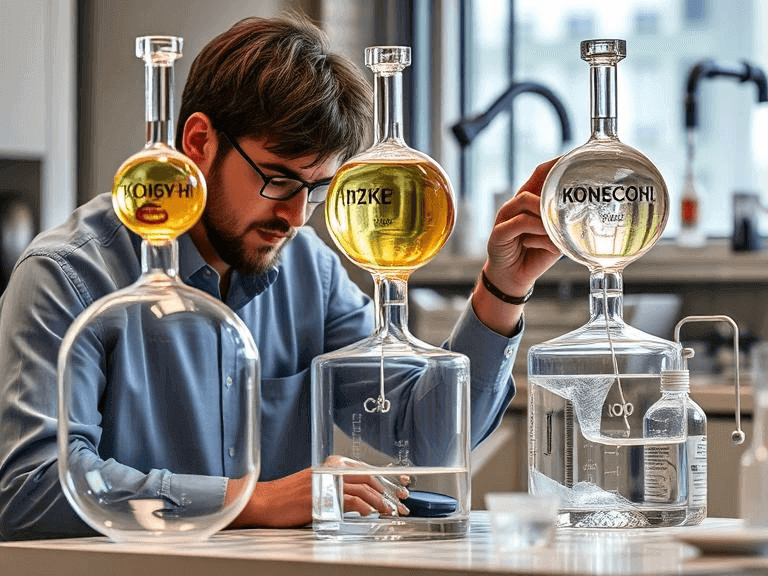Introduction
In the world of chemistry, it’s not uncommon to encounter complex molecular formulas and structures that represent a variety of substances.
One such combination involves the interaction of HCOOCH, CH2, and H2O, elements that may seem disconnected at first glance but play significant roles in numerous chemical processes.
This article aims to explore the intricacies of these molecules and their relationships in a way that is accessible to both tech enthusiasts, developers, business owners, and general readers alike.
By explaining these complex topics simply, we’ll not only enhance your understanding of these molecules but also align with the broader scientific context, from practical applications to theoretical significance.
What Are HCOOCH, CH2, and H2O?
Before diving deeper into their relationships, it’s essential to understand what each of these chemical entities represents.
- HCOOCH (Formate Ester): Often referred to as a formate ester, HCOOCH is a compound that combines a formic acid molecule (HCOOH) and an alcohol (such as methanol, CH3OH). Formate esters have various industrial applications, including use in fragrances, solvents, and in some chemical processes.
- CH2 (Methylene Group): The CH2 group, also known as methylene, is a key component in organic chemistry. It’s often found in compounds where it links other atoms, like in polymers or chains. It consists of a single carbon atom bonded to two hydrogen atoms.
- H2O (Water): Water is one of the most fundamental substances on Earth. It is essential for life and is involved in nearly every chemical reaction in biological systems. Water’s molecular structure, H2O, involves two hydrogen atoms bonded to one oxygen atom. It serves as a solvent, a medium for reaction, and a vital part of countless processes.
The Role of HCOOCH, CH2, and H2O in Chemical Reactions
To understand how these molecules interrelate, we’ll look at their roles in chemical reactions. These molecules are involved in diverse processes, from biological systems to industrial applications.
The Role of HCOOCH in Esterification
Esters, like HCOOCH, are widely used in chemical industries for their fragrance and solvent properties. The formation of HCOOCH (formate ester) happens through an esterification reaction, where an alcohol (often methanol) reacts with formic acid. Here’s a simplified breakdown of the reaction:
- Formic acid (HCOOH) reacts with Methanol (CH3OH).
- The reaction produces Formate ester (HCOOCH3) and Water (H2O).
This esterification process can be reversed, a process known as hydrolysis, where water breaks down the ester back into the original alcohol and acid.
The Role of CH2 in Organic Chemistry
The CH2 group, or methylene, is a common building block in organic chemistry. It often acts as a bridge between two larger molecules or groups, enabling the formation of longer chains or more complex structures.
For example, in the synthesis of plastics or polymers, CH2 units link together to form polymer chains, such as polyethylene, which is used in everything from packaging to household products.
The Role of H2O in Hydrolysis Reactions
Water (H2O) is a fundamental solvent in many chemical reactions. It is involved in hydrolysis reactions, which are the reverse of esterification. For example, when HCOOCH undergoes hydrolysis, water breaks the ester bond, resulting in the formation of formic acid (HCOOH) and methanol (CH3OH).
This reaction is vital in biological systems, where enzymes use water to break down larger molecules into simpler ones for absorption or use.
Practical Applications and Real-World Examples
Now that we’ve covered the basics of each molecule and their individual roles, let’s explore some real-world applications where these molecules are crucial.
HCOOCH in Industry:
- Solvents: Many esters, including formate esters, are used as solvents in various chemical processes, particularly in the production of fragrances, paints, and coatings.
- Plastic Manufacturing: Formate esters are also used in the production of plastics and resins, where they can serve as a plasticizer, making the materials more flexible.
CH2 in Polymer Chemistry:
- Polymer Chains: The methylene group is pivotal in the formation of polymers like polyethylene, polypropylene, and polystyrene. These polymers are integral to manufacturing everyday items like plastic containers, pipes, and textiles.
- Drug Design: The CH2 group can be used in the synthesis of pharmaceutical compounds, where it may play a role in modifying the biological activity of drugs.
H2O in Biological Systems:
- Hydration: Water is essential in human biology. It helps transport nutrients, regulate temperature, and maintain cellular structure.
- Hydrolysis in Digestion: In digestion, water plays a crucial role in breaking down food molecules, enabling absorption by the body.
How HCOOCH, CH2, and H2O Interact in Chemical Systems
While each of these molecules has its own specific role, they often interact in larger chemical systems. One example is in the formation and breakdown of polymers.
For instance, HCOOCH (formate esters) can be part of a polymerization process, where CH2 groups serve as the repeating unit to create a polymer chain. Water is often involved in the breakdown of these polymers or in making the process more efficient through hydrolysis.
These interactions are fundamental in many manufacturing processes, including plastic production and industrial-scale esterification.
Expert Insights on Molecular Interactions
Experts in the field of organic chemistry emphasize that understanding the interactions between molecules like HCOOCH, CH2, and H2O is key to advancing numerous industries.
Dr. Emily Harrison, a renowned chemist, states, “The relationship between esters, methylene groups, and water is critical not only for industrial processes but also for understanding natural systems, such as enzyme functions and metabolic reactions.”
Her research highlights how these molecules can be manipulated to create more efficient chemical processes or even new materials.
Conclusion
In summary, HCOOCH, CH2, and H2O are fundamental components in many chemical reactions and applications. From industrial uses like plastic manufacturing and ester production to their roles in biological systems, these molecules showcase the complexity and interconnectedness of the chemical world.
Understanding how they interact helps drive advancements in chemistry, technology, and business practices.
For anyone working in tech, business, or chemistry, recognizing the importance of these molecules and their relationships can offer new opportunities for innovation. Whether you’re developing new materials, improving manufacturing processes, or simply curious about molecular interactions, there’s always more to discover in this fascinating field.



